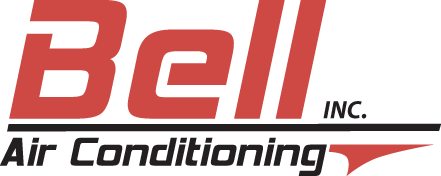
You shouldn’t have to give up comfort or empty your wallet to keep your residence at a refreshing temp during summer weather.
But what is the ideal temp, exactly? We discuss advice from energy experts so you can select the best temp for your family.
Here’s what we recommend for the most energy-efficient setting for air conditioning in Temple/Belton .
Recommended Thermostat Settings for Summer
Most households find using the thermostat at 72-73 degrees is ideal. However, if there’s a sizeable difference between your interior and outdoor temperatures, your AC bills will be higher.
This is our advice based on the U.S. Department of Energy (DOE) and ENERGY STAR®.
While at home: 78 degrees. While that sounds too high, there are ways you can keep your residence refreshing without having the air conditioner on constantly.
Keeping windows and window treatments down during the day keeps cold air where it should be—indoors. Some window solutions, such as honeycomb shades or plantation shutters, are made to deliver more insulation and enhanced energy savings.
If you have ceiling fans in your house, the DOE says you can move thermostat settings about 4 degrees warmer without compromising comfort. That’s since they cool through a windchill effect. As they cool people, not rooms, shut them off when you leave a room.
If 78 degrees still feels too hot initially, try running a trial for a week or so. Get started by raising your temperature to 78 degrees while you’re at your residence. Then, gradually decrease it while using the ideas above. You could be surprised at how cool you feel at a warmer temperature setting.
While away: 88 degrees. There’s no need to keep the AC working all day while your residence is vacant. Moving the temperature 7–10 degrees warmer can save you as much as 5–15% on your air conditioning costs, according to the DOE.
When you arrive home, don’t be tempted to set your thermostat colder than 78 to cool your house more quickly. This isn’t useful and usually produces a more expensive electricity bill.
A programmable thermostat is a helpful approach to keep your temperature in check, but you need to set programs. If you don’t utilize programs, you risk forgetting to raise the set temperature when you leave.
If you’re looking for a handy remedy, think about buying a smart thermostat. This thermostat connects with your phone, so it is aware when you’re at your house and when you’re out. Then it automatically changes temperature settings for the biggest savings. How much exactly? An estimated $180 yearly on heating and cooling, according to ENERGY STAR.
Another benefit of getting a smart thermostat? You can use your phone to keep an eye on and adjust temperature settings from just about anywhere.
While sleeping: Around 70 degrees. While ENERGY STAR suggests 82 degrees, that could be unpleasant for most families. Most people sleep better when their sleeping area is cold, so that’s why the National Sleep Foundation recommends 60–67 degrees. But that may be too cool, based on your PJ and blanket preference.
We suggest trying an equivalent test over a week, moving your thermostat higher and slowly lowering it to select the right setting for your family. On pleasant nights, you could learn keeping windows open at night and relying on a ceiling fan is a better solution than using the air conditioning.
More Methods to Use Less Energy During Warm Weather
There are other approaches you can spend less money on AC bills throughout hot weather.
- Buy an energy-efficient air conditioning system. Central air conditioners only work for about 12–15 years and get less efficient as they become older. An updated air conditioner can keep your residence more comfortable while keeping electricity expenses down.
- Book yearly air conditioner maintenance. Routine air conditioner maintenance keeps your unit working like it should and could help it operate at greater efficiency. It can also help extend its life expectancy, since it allows technicians to find little issues before they lead to a major meltdown.
- Switch air filters frequently. Read manufacturer instructions for replacing your air filter. A dirty filter can lead to your system short cycling, or switch on and off too frequently, and raise your utility.
- Measure attic insulation levels. Nearly 90% of houses in the U.S. don’t have proper insulation, according to the Insulation Institute. Most southern climates should have 13–14” of attic insulation, while northern climates should have 16–18”.
- Have your ductwork checked. Ductwork that has come apart over time can leak conditioned air into your attic, walls or crawl space. This can result in big comfort issues in your home, including hot and cold spots.
- Seal holes, doors and windows. Keep muggy air where it belongs by closing holes. You can also caulk or weather strip doors to keep more cool air inside.
Conserve More Energy This Summer with Bell Air Conditioning Inc
If you want to save more energy during hot weather, our Bell Air Conditioning Inc experts can assist you. Reach us at 254-307-9572 or contact us online for additional details about our energy-saving cooling solutions.
